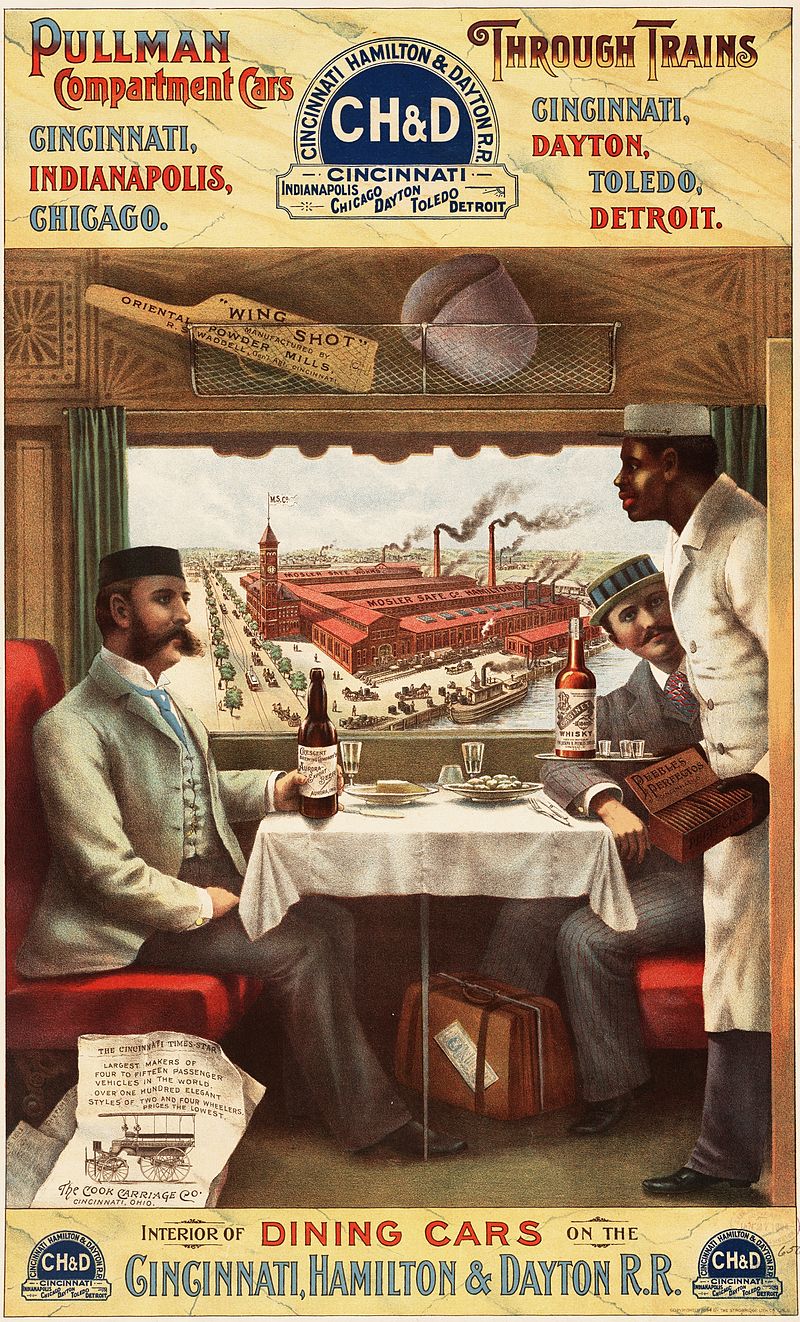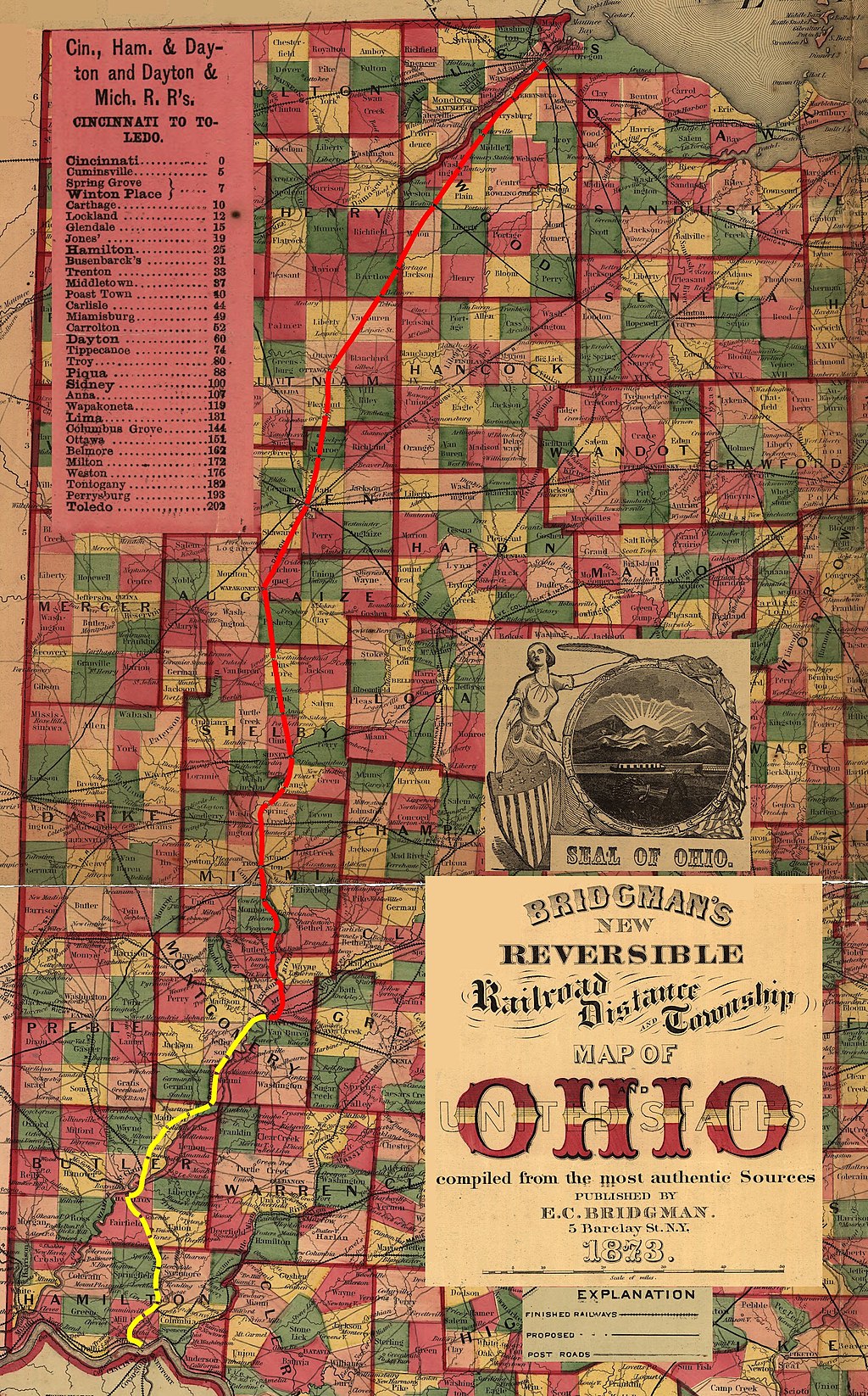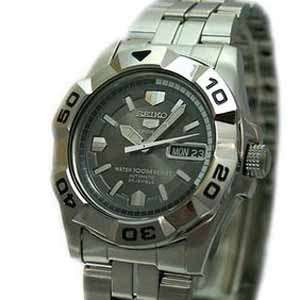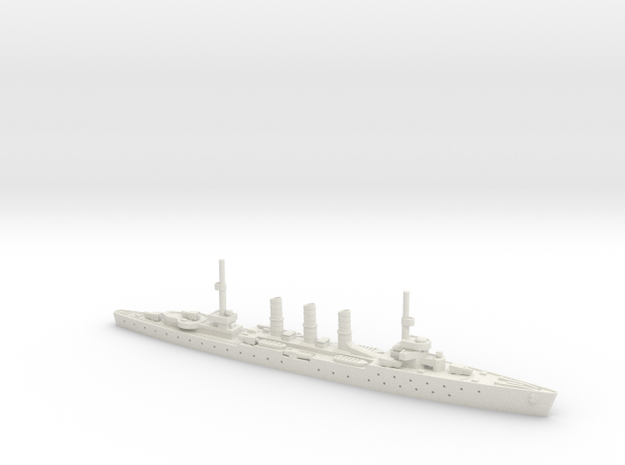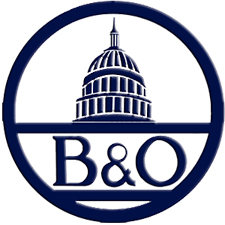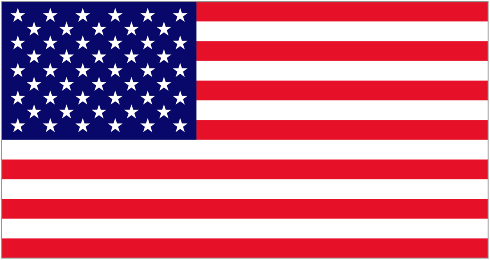Company History: Construction of the Cincinnati, Hamilton, and Dayton Railroad (CH & D) began in the Miami Valley in 1846. The railway was completed in 1851 and officially began operation connecting Cincinnati and Hamilton, Ohio. Soon, the railroad stretched onward to Dayton. The line originally ran a total of 59.07 miles.
The construction of the railroad attracted German and Irish migrants who were looking for work. After the railroad was completed, these immigrants stayed in the region and found work in the factories that began to emerge near the railroad and the Miami and Erie Canal.
The CH & D's original purpose was as a commuter line. Professionals and businessman saw the railroad as a way to connect to other cities to conduct business. A number of new communities were built along the rail line, and wealthy people moved out of the city of Cincinnati to live in these communities. Eventually the railroad connected to Toledo and Detroit to the north.
The Cincinnati, Hamilton, and Dayton Railway Company, who owned and operated the CH & D, began to acquire more railroad lines throughout the next 40 years. Beginning in 1863, it operated the Dayton & Michigan RR. Joining the Atlantic and Great Western RR in 1865 gave commuters access to New York and other eastern points. The Ohio and Mississippi RR became part of the CH & D RR linking Cincinnati and St. Louis and western points through Indiana and Illinois. Eventually the CH & D operated additional lines connecting to Indianapolis, Chicago, Richmond, Ironton, Louisville, and Decatur.
By the end of the nineteenth century, the company controlled over 640 miles of track. There were 34 locomotives, 30 passenger cars, and 437 freight cars. The railway included parlors, cafe-coaches, dining cars, baggage, and mail cars. Construction supplies as well as agricultural and petroleum products were transported in freight cars. In 1904, the railroad was not able to handle the volume of passenger and freight business. With this came financial challenges and the Baltimore & Ohio Railroad agreed to purchase the line in 1909. Cincinnati, Hamilton & Dayton Railroad was sold at auction in Dayton and became part of the Baltimore & Ohio. SOURCE: www.ohiohistorycentral.org
The construction of the railroad attracted German and Irish migrants who were looking for work. After the railroad was completed, these immigrants stayed in the region and found work in the factories that began to emerge near the railroad and the Miami and Erie Canal.
The CH & D's original purpose was as a commuter line. Professionals and businessman saw the railroad as a way to connect to other cities to conduct business. A number of new communities were built along the rail line, and wealthy people moved out of the city of Cincinnati to live in these communities. Eventually the railroad connected to Toledo and Detroit to the north.
The Cincinnati, Hamilton, and Dayton Railway Company, who owned and operated the CH & D, began to acquire more railroad lines throughout the next 40 years. Beginning in 1863, it operated the Dayton & Michigan RR. Joining the Atlantic and Great Western RR in 1865 gave commuters access to New York and other eastern points. The Ohio and Mississippi RR became part of the CH & D RR linking Cincinnati and St. Louis and western points through Indiana and Illinois. Eventually the CH & D operated additional lines connecting to Indianapolis, Chicago, Richmond, Ironton, Louisville, and Decatur.
By the end of the nineteenth century, the company controlled over 640 miles of track. There were 34 locomotives, 30 passenger cars, and 437 freight cars. The railway included parlors, cafe-coaches, dining cars, baggage, and mail cars. Construction supplies as well as agricultural and petroleum products were transported in freight cars. In 1904, the railroad was not able to handle the volume of passenger and freight business. With this came financial challenges and the Baltimore & Ohio Railroad agreed to purchase the line in 1909. Cincinnati, Hamilton & Dayton Railroad was sold at auction in Dayton and became part of the Baltimore & Ohio. SOURCE: www.ohiohistorycentral.org
Successor/Parent History: The Baltimore and Ohio Railroad (reporting marks B&O, BO) is one of the oldest railroads in the United States and the first common carrier railroad. It came into being mostly because the city of Baltimore wanted to compete with the newly constructed Erie Canal (which served New York City) and another canal being proposed by Pennsylvania, which would have connected Philadelphia and Pittsburgh. At first this railroad was located entirely in the state of Maryland with an original line from the port of Baltimore west to Sandy Hook. At this point to continue westward, it had to cross into Virginia (now West Virginia) over the Potomac River, adjacent to the confluence of the Potomac and Shenandoah rivers. From there it passed through Virginia from Harpers Ferry to a point just west of the junction of Patterson Creek and the North Branch Potomac River where it crossed back into Maryland to reach Cumberland. From there it was extended to the Ohio River at Wheeling and a few years later also to Parkersburg, West Virginia.
It is now part of the CSX Transportation (CSX) network, and includes the oldest operational railroad bridge in the USA. The B&O also included the Leiper Railroad, the first permanent horse-drawn railroad in the U.S. In later years, B&O advertising carried the motto: "Linking 13 Great States with the Nation." Part of the B&O Railroad's immortality has come from being one of the four featured railroads on the U.S. version of the board game Monopoly, but it is the only railroad on the board which did not serve Atlantic City, New Jersey, directly.
When CSX established the B&O Railroad Museum as a separate entity from the corporation, some of the former B&O Mount Clare Shops in Baltimore, including the Mt. Clare roundhouse, were donated to the museum while the rest of the property was sold. The B&O Warehouse at the Camden Yards rail junction in Baltimore now dominates the view over the right-field wall at the Baltimore Orioles' current home, Oriole Park at Camden Yards.
At the end of 1970 B&O operated 5552 miles of road and 10449 miles of track, not including the Staten Island Rapid Transit (SIRT) or the Reading and its subsidiaries.
Read more on Wikipedia.
It is now part of the CSX Transportation (CSX) network, and includes the oldest operational railroad bridge in the USA. The B&O also included the Leiper Railroad, the first permanent horse-drawn railroad in the U.S. In later years, B&O advertising carried the motto: "Linking 13 Great States with the Nation." Part of the B&O Railroad's immortality has come from being one of the four featured railroads on the U.S. version of the board game Monopoly, but it is the only railroad on the board which did not serve Atlantic City, New Jersey, directly.
When CSX established the B&O Railroad Museum as a separate entity from the corporation, some of the former B&O Mount Clare Shops in Baltimore, including the Mt. Clare roundhouse, were donated to the museum while the rest of the property was sold. The B&O Warehouse at the Camden Yards rail junction in Baltimore now dominates the view over the right-field wall at the Baltimore Orioles' current home, Oriole Park at Camden Yards.
At the end of 1970 B&O operated 5552 miles of road and 10449 miles of track, not including the Staten Island Rapid Transit (SIRT) or the Reading and its subsidiaries.
Read more on Wikipedia.
Brief History: The U.S. is a country of 50 states covering a vast swath of North America, with Alaska in the northwest and Hawaii extending the nation’s presence into the Pacific Ocean. Major Atlantic Coast cities are New York, a global finance and culture center, and capital Washington, DC. Midwestern metropolis Chicago is known for influential architecture and on the west coast, Los Angeles' Hollywood is famed for filmmaking.
Item created by: CNW400 on 2021-09-29 19:28:15. Last edited by George on 2024-02-13 09:18:41
If you see errors or missing data in this entry, please feel free to log in and edit it. Anyone with a Gmail account can log in instantly.
If you see errors or missing data in this entry, please feel free to log in and edit it. Anyone with a Gmail account can log in instantly.


